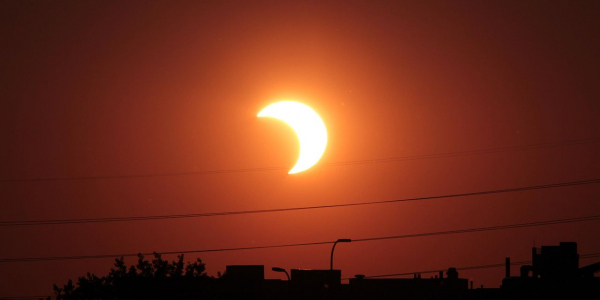Solar Eclipse Viewing
Faculty in the Earth, Environmental, and Planetary Sciences department and Physics department will host an eclipse-viewing event on the front steps of Brookings Hall on the Danforth campus of Washington University in St. Louis. This event is free and open to students, faculty and staff, and the public.
Participants will safely view the eclipse through up to three different telescopes. The telescopes will also capture and project images of the eclipse onto larger computer monitor screens, for further ease of viewing. One of the telescopes will be a special H-alpha telescope with filters to allow viewers to see textures on the surface of the sun.
Free eclipse-viewing sunglasses will also be available for the first 250 attendees.
The October 14 partial solar eclipse will last almost three hours, beginning at about 10:30 am in St. Louis. The time when the sun will be most covered by the moon will happen at around 12 pm. At the peak of this eclipse, the sun will look like a crescent shape, or somewhat like a quarter moon.
Participants will also learn about and get ready for witnessing the full eclipse on April 8, 2024. The full eclipse in 2024 is the last solar eclipse that will be viewable in the United States until 2045.
Parking is available in the nearby East End Parking Lot.
Graduate student volunteers will also be participating at a related SciFest event hosted by the Saint Louis Science Center.

